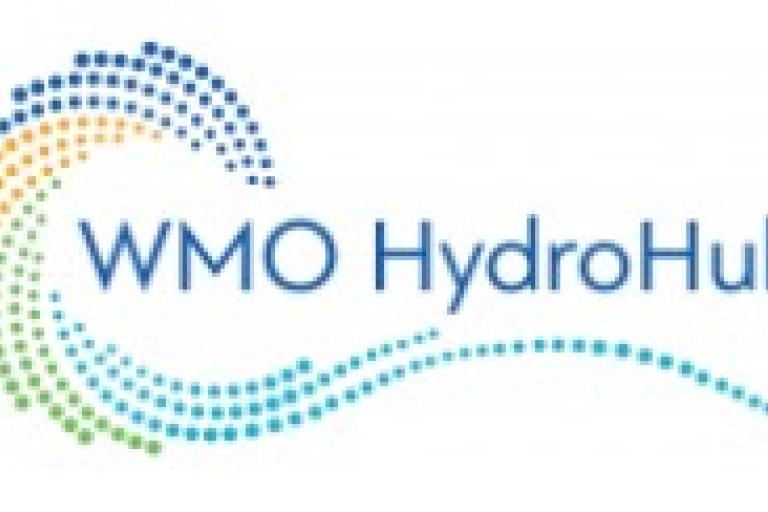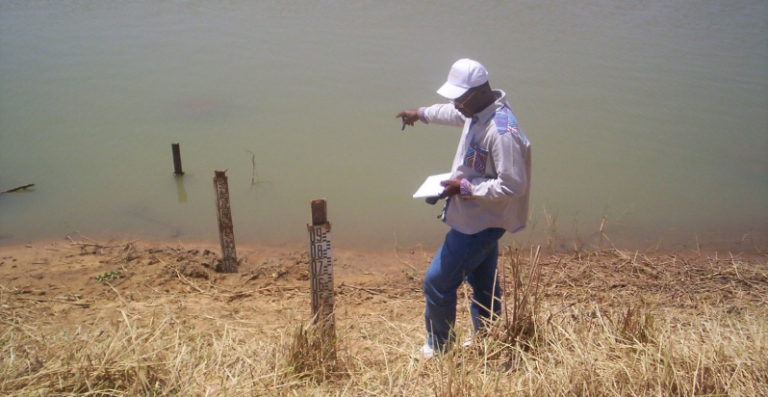HydroHub improves hydrological monitoring
The Swiss Agency for Development and Cooperation (SDC) has allocated CHF 2.4 million to the WMO Global Hydrometry Support Facility (WMO HydroHub) to fund Phase II, which was officially launched on 1 September.

The Swiss Agency for Development and Cooperation (SDC) has allocated CHF 2.4 million to the WMO Global Hydrometry Support Facility (WMO HydroHub) to fund Phase II, which was officially launched on 1 September.
“The WMO HydroHub has proven instrumental in increasing the quality and amount of hydrometric data as a global public good decisive to disaster risk reduction, sustainable water management and environmental protection,” stated Simon Zbinden, Head of the Global Programme Water at SDC.
About 60% of WMO Member States and Territories report declining local water monitoring capacities. However, innovations in sensor technologies and data processing offer opportunities for enhancing water observation networks that are not being realized.
In 2017, WMO and SDC partnered to develop the WMO HydroHub Phase I to bring those opportunities to WMO Members. SDC provided CHF 2.7 million in funding over a five-year period to enhance support for hydrological monitoring to National Meteorological and Hydrological Services (NMHSs) around the world and capitalize on the numerous opportunities arising from recent developments in innovation research, and data and information technology.
WMO HydroHub Phase I closed in August 2021 and now SDC has allocated an additional CHF 2.4 million to fund Phase II, starting in September 2021, for another five-year period. Phase II aims to enhance capacities of NMHSs in sustainable operation and effective delivery of hydrological monitoring services for disaster risk reduction, social and economic development and environmental protection. This will be done through the implementation of a portfolio of 10 activities including trainings and learning exchanges, innovation calls, workshops, and ministerial roundtables.
Mr Zbinden noted that “the project is fully in line with SDC’s commitment to a water-secure world” and called on other donors to “join this initiative to help step up global action on water and thus accelerate the delivery of the 2030 Agenda“.
The project has three main expected outcomes:
- Increased capacity: NMHSs with staff that have more technical expertise will be able to sustainably operate hydrometeorological monitoring systems with enhanced data management and improved national and international data sharing.
- Operationalized innovation: NMHSs will learn to continuously develop and innovate their hydrometric approaches and technologies in collaboration with academia and the private sector.
- Optimized engagements and investments: NMHSs seek out and act on development opportunities, which will impact the overall hydromet community through strengthened internal and external engagements that offer greater visibility, knowledge sharing and communication.
“The WMO HydroHub has added a new dimension to WMO’s efforts in supporting hydrological measurements, monitoring and information systems: Innovation,” stated Johannes Cullmann, Director, Water and Cryosphere at WMO. “WMO HydroHub Phase I enabled the WMO community to integrate innovation in its projects and operations, strengthening knowledge about water resources. We had valuable practical outcomes from two innovation calls, which brought the private and scientific sectors together to develop and implement new solutions to long-standing problems related to water measuring, monitoring and data exchange.”
“In Phase II, which we officially launched on 1 September, we will scale up the WMO HydroHub to create an innovation culture that fosters creative solutions that can be implemented at a much larger scale. The WMO HydroHub is an initial step to transformational change to provide innovative, flexible and constantly evolving solutions for an increasingly complex world and ever more tricky hydrological issues around water supply, demand and disaster management,” said Mr Cullmann.
He continued, “In Phase II, which we officially launched on 1 September, we will scale up the WMO HydroHub to create an innovation culture that fosters creative solutions that can be implemented at a much larger scale. The WMO HydroHub is an initial step to transformational change to provide innovative, flexible and constantly evolving solutions for an increasingly complex world and ever more tricky hydrological issues around water supply, demand and disaster management.”

Since 2017, WMO HydroHub Phase I has provided essential support to NMHSs to better understand their gaps and needs, and to take up innovative hydrometric technologies in their operations as well as in managing and sharing their hydrological data.
The project had made many significant contributions over the past five years:
- The design and dissemination of a Global Hydrology Survey that captured key information on governmental and non-governmental organizations responsible for operational hydrology within countries, in view of identifying capacity gaps at the regional and national levels.
- The establishment of a partnership with the Inter-American Development Bank (IDB) to conduct country-wide needs and capabilities assessments of NMHSs and other relevant organizations in Costa Rica and Panama. The assessments are being carried out in collaboration with the Associated Programme on Flood Management (APFM) and the Global Water Partnership (GWP).
- Two Innovation Calls were carried out to foster the operational uptake of innovative approaches and technologies by NMHSs in a way that makes their operations more cost-effective and sustainable. These led to project implementations in Belize, Bhutan, the Indian Himalayan region and Tanzania.
- The WMO Hydrological Observing System (WHOS) was implemented in the La Plata and Arctic basins, and is being implemented in the Dominican Republic. Thirteen countries are now freely exchanging and using hydromet data across borders with WHOS. The implementation of WHOS was supported by the National Research Council of Italy (CNR).
- The development of a distance learning course on hydrological data sharing to close the knowledge gap on basic ICT and readily available data exchange standards, and contribute to the advancement of interoperable hydrological data exchange among NMHSs worldwide. The course was developed together with the COMET Program.
More information on WMO HydroHub Phase I is available here, and Phase II here.










